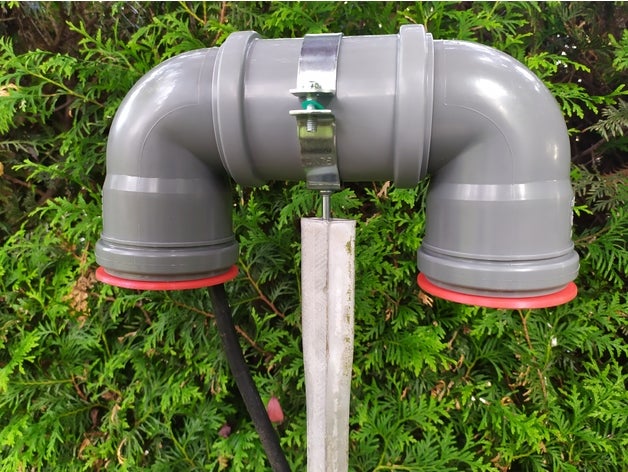How is Berlin’s
air measured?
Official measuring stations in Berlin:
The pollutants are officially measured
by 16 stationary stations and one mobile station in Berlin.
Out of those measuring points, 7 are placed on main streets, 5 in low traffic areas
and 5 on the outskirts of the city. In addtion to those 17 active measuring points that
deliver data directly to the servers of the city, there is a varying amount of official
passive collectors that only measure NO2 (23 in 2018). They are
placed on lamp posts along main streets and the data from the passive collectors are being read
and validated every 14th day.
Not every measuring point is collecting information about all the pollutants.
In 2018 there were:
17 active points and 23 passive collectors measuring NO2
8 stations measuring Ozone
5 stations measuring PM2.5 (using Gravimetric Analysis)
This relatively small amount of measuring stations throughout Berlin provide sufficient
information to make an evaluation of the city's general air quality.
To be able to have a more precise understanding of the air quality in the city’s different
areas and streets, many more measuring stations are needed. Only then could the air
quality measurements become helpful to the individual citizen's daily life.

mobile station

passive collector

stationary station
Measurements by citizen science initiative in Berlin:
Luftdaten.info is a citizen–driven air measurement initiative that first started in
Stuttgart that is now present in big parts of Europe. Citizens are encouraged to personally
measure air quality with low cost (PM2.5) sensors, and publish the
results on the internet platform www.luftdaten.info.
The number of active sensors are constantly changing, depending on the amount of
participating citizens.
At the end of 2019 there were 236 sensors of this kind measuring PM2.5 and
estimating the PM10 levels in Berlin.

Source: dust sensor / Feinstaubsensor SDS011 by 123nobby is licensed under the Creative Commons - Attribution license.
Image Source: https://www.thingiverse.com/thing:3769591
Map of Berlin’s measuring points
The map shows air pollution in Berlin. The data for NO2 and Ozone (O3) are taken from the Berlin Senate Department for the Environment,
Transport and Climate Protection and are updated every day at 1 a.m. The data for PM2.5 are taken from the citizen science initiative Luftdaten.info and are updated every hour.
Legende:

Ozone (O3)

Particulate matter (PM2.5)

Nitrogen Dioxide (NO2)

Passive collectors (NO2)
Difference in measurement technics between the City of Berlin and Luftdaten.info:
Collection:
There is a difference in the method of collecting PM2.5 data between the City of
Berlin and Luftdaten.info that can lead to differences in the values. In case of high
humidity, especially fog, the Luftdaten.info values can be significantly higher than
the City of Berlin’s official measurements. This is because the City of Berlin measure the
dried fine dust in a laboratory environment providing a stable humidity and temperature (Gravimetric Analysis).
The Luftdaten.info sensors measure the humid fine dust and calibrate them with a standardised
protocol.
Hight:
Another difference is that the 17 official measuring points in Berlin are in general placed on a
height of 3 – 4,5m above the ground which is the common height to place sensitive
equipment in cities to avoid vandalisation. The height of the Luftdaten.info sensors in
Berlin are not made available because of data–security reasons. The height of the
measurement points is crucial to be able to measure relevant concentrations of pollutants.
The optimal height for measuring from 50cm (children) and up to 2m (adults) above
ground.
Contextualisation:
These differences unfortunately make the measurements from Luftdaten.info harder to
contextualise and evaluate. However, the Senate Department in Berlin acknowledges that
the Luftdaten.info sensors are a valuable complement to their own official measuring points
in indicating local increases in PM2.5 concentration in the city.
